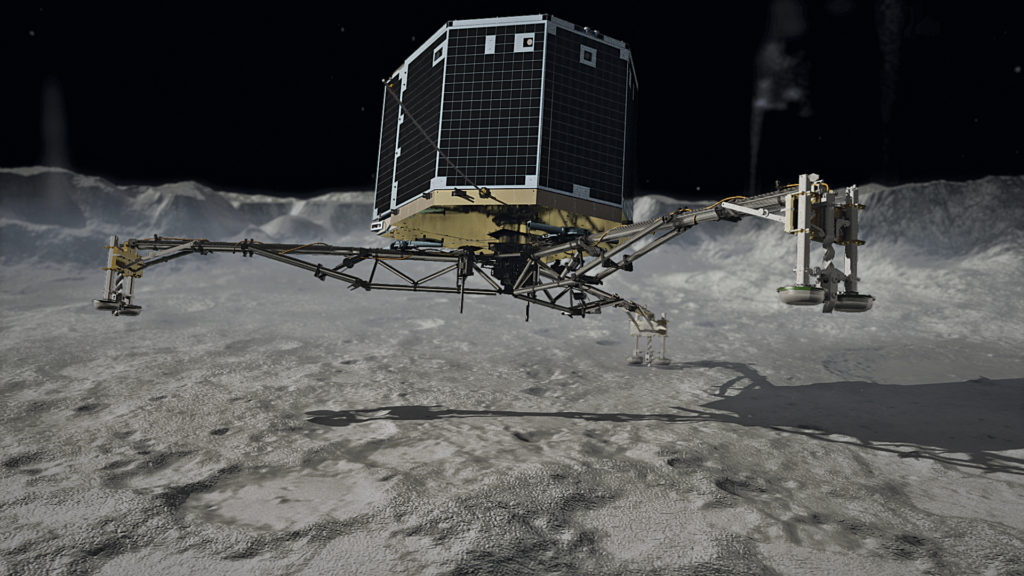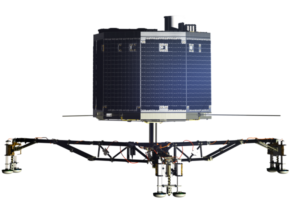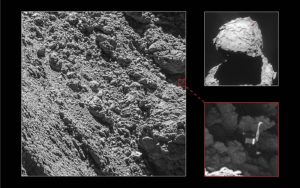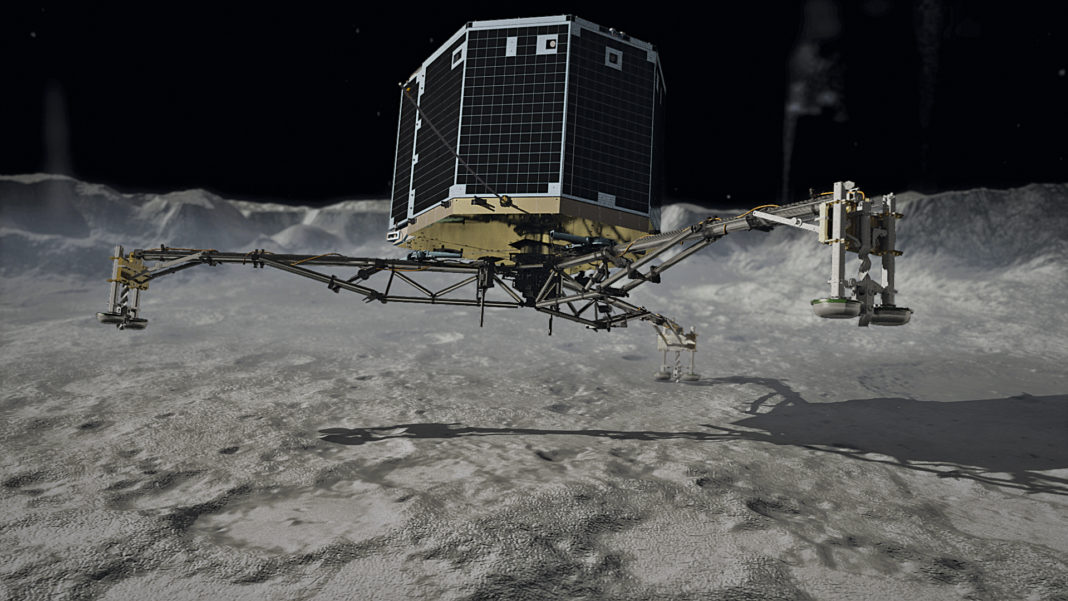On 12 November 2014, Philae touched down on the comet, but it bounced when its anchoring harpoons failed to deploy and a thruster designed to hold the probe to the surface did not fire. After bouncing off the surface twice, Philae achieved the first-ever “soft” (non-destructive) landing on a comet nucleus, although the lander’s final, uncontrolled touchdown left it in a non-optimal location and orientation.

Despite the landing problems, the probe’s instruments obtained the first images from a comet’s surface. Several of the instruments on Philae made the first direct analysis of a comet, sending back data that would be analyzed to determine the composition of the surface.

The first image released, on 13 November 2014, was a mosaic from two of the CIVA cameras, clearly showing the cliff face Philae had landed next to, as well as part of the lander itself.

In October 2020, the scientific journal Nature published an article that revealed what it was determined Philae had discovered while it was operational on the surface of 67P/Churyumov–Gerasimenko.
The scientific goals of its experiments focus on the elemental, isotopic, molecular, and mineralogical composition of the cometary material, the characterization of physical properties of the surface and subsurface material, the large-scale structure, and the magnetic and plasma environment of the nucleus.
According to Wikipedia















